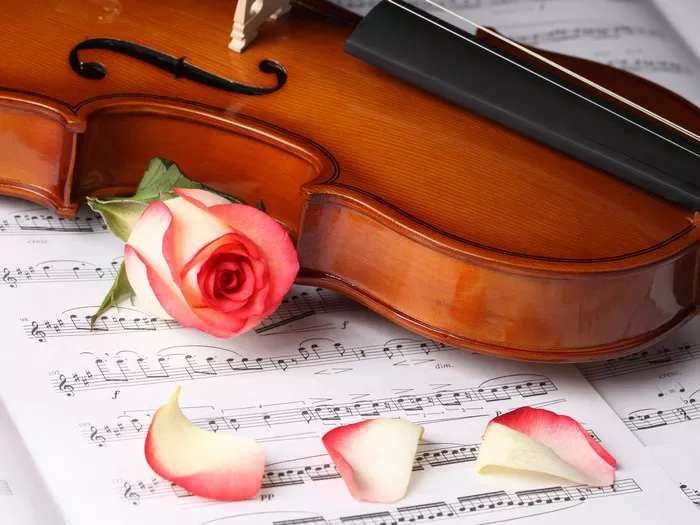The world of music is rich and diverse, filled with notation symbols and terminologies that can seem like a secret code to the uninitiated. Among these symbols, the “4/4” time signature is a fundamental element, especially when it comes to playing the violin. In this article, we delve into what the “4/4” time signature means in the context of the violin, exploring its significance, interpretation, and practical applications.
Understanding the Basics of Time Signatures
Before we delve into the world of the violin, it’s essential to grasp the concept of time signatures in music. A time signature is a numerical symbol that appears at the beginning of a piece of sheet music. It consists of two numbers stacked vertically, like a fraction. The top number represents the number of beats in each measure, while the bottom number indicates the type of note that receives one beat.
In the case of “4/4,” the top number is “4,” signifying that there are four beats in each measure. The bottom number, also “4,” indicates that the quarter note (a note with one-fourth the duration of a whole note) receives one beat.
See Also: 10 aspects that affect the value of a violin: A Full Guide
The Significance of 4/4 Time Signature for Violinists
For violinists, the 4/4 time signature is one of the most common and widely used in music. It lays the foundation for rhythm, helping players understand the organization of musical beats within a piece. Here’s what the 4/4 time signature signifies for violinists:
1. Consistency:
The 4/4 time signature provides a consistent and steady rhythmic structure. With four beats per measure, violinists can establish a clear sense of timing, making it easier to stay in sync with other musicians in an ensemble or orchestra.
2. Quarter Note Emphasis:
In 4/4 time, the quarter note receives one beat. This means that when playing in 4/4, violinists should emphasize the quarter note as the primary unit of time. This emphasis guides the bowing and rhythm of the violin performance.
3. Versatility:
The 4/4 time signature is versatile and adaptable, making it suitable for a wide range of musical genres. Whether you’re playing classical, jazz, folk, or contemporary music, the 4/4 time signature is a versatile framework that can accommodate various rhythmic patterns.
Interpreting 4/4 Time Signature in Violin Music
Now that we’ve established the significance of the 4/4 time signature for violinists, let’s explore how it is interpreted in violin music:
1. Counting Beats:
In 4/4 time, violinists count four beats in each measure. This counting helps maintain a consistent rhythm throughout the piece. A metronome, which clicks at a steady tempo, can be a valuable tool for keeping time, especially for beginners.
2. Bow Direction:
The 4/4 time signature guides bowing direction. Generally, violinists start a new bow stroke at the beginning of each measure. This helps maintain a smooth and even tone and ensures that the bow changes align with the beats.
3. Accentuation:
The emphasis on the quarter note means that the first beat of each measure is often accented or emphasized slightly. This accentuation adds a natural ebb and flow to the music, creating a sense of motion and direction.
4. Subdividing Beats:
In addition to counting the four beats per measure, violinists often subdivide these beats further. For example, each beat can be subdivided into two eighth notes, resulting in eight evenly spaced notes in a measure. Subdividing helps maintain precision and accuracy, particularly in fast-paced passages.
Practical Applications of 4/4 Time in Violin Music
The 4/4 time signature is ubiquitous in violin music, appearing in countless compositions across genres. Here are some practical applications of 4/4 time in violin music:
1. Classical Repertoire:
Many classical violin compositions, such as sonatas, concertos, and symphonies, are written in 4/4 time. This time signature enables violinists to navigate the intricate melodies and harmonies of classical music with precision.
2. Folk and Traditional Music:
Whether performing Celtic jigs, American fiddle tunes, or other folk traditions, violinists often encounter 4/4 time. Its even and predictable rhythm makes it well-suited for folk music, allowing musicians to play with energy and enthusiasm.
3. Jazz Standards:
In the world of jazz, 4/4 time is a staple. Violinists in jazz ensembles use this time signature to swing, groove, and improvise, adding their unique flair to the music.
4. Contemporary and Pop Music:
Many contemporary and pop songs are written in 4/4 time, making them accessible to violinists who wish to explore popular genres. Violinists in bands or as solo performers can adapt their playing to fit the catchy melodies and rhythms of these songs.
Conclusion
In the realm of the violin, the 4/4 time signature is a cornerstone of musical rhythm and structure. It offers consistency, versatility, and a clear framework for violinists to navigate the intricacies of music across genres. Understanding and interpreting the 4/4 time signature is essential for violinists, as it forms the rhythmic heartbeat of their performances, allowing them to express their artistry while staying in sync with fellow musicians. Whether you’re a beginner or an experienced violinist, mastering the 4/4 time signature is a fundamental step toward becoming a skilled and expressive musician.


